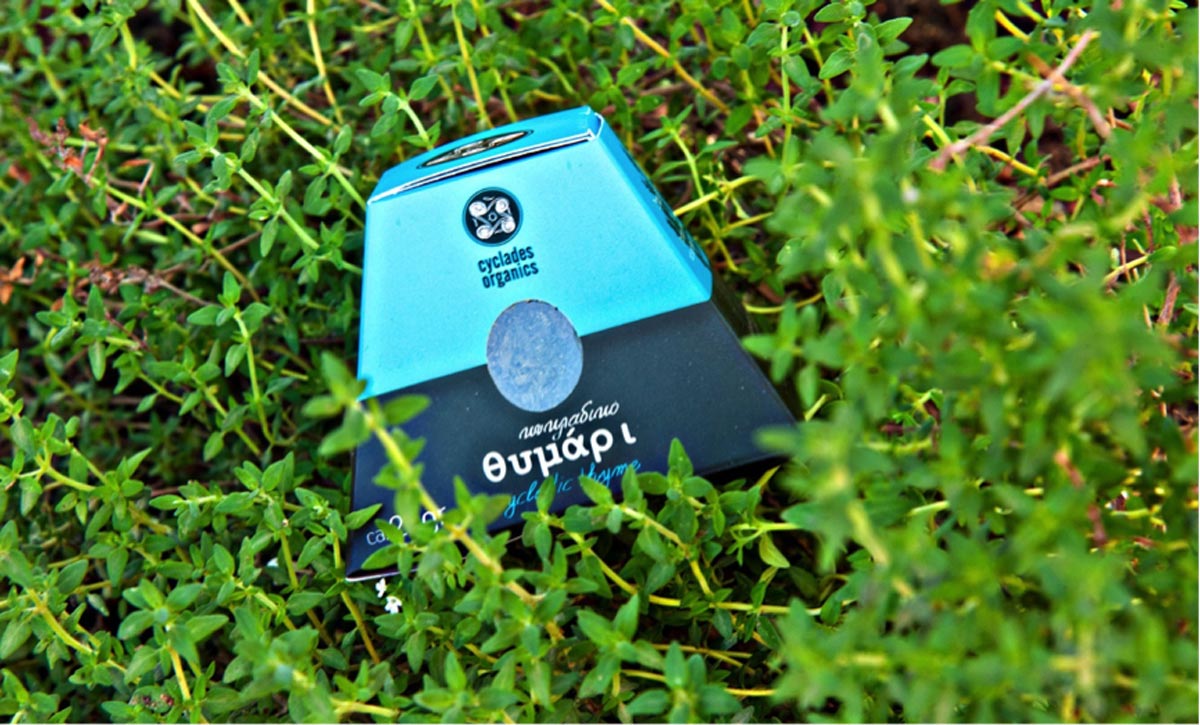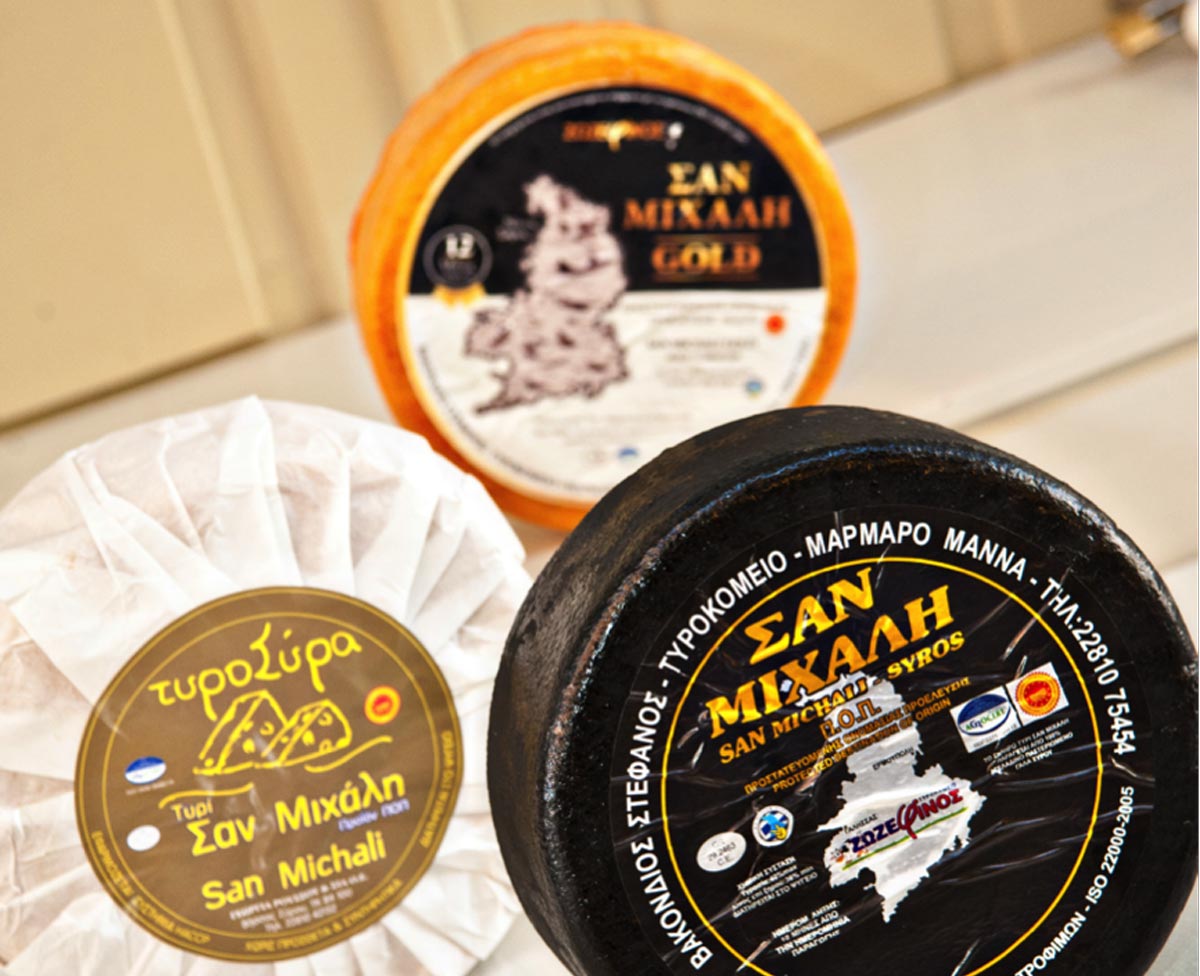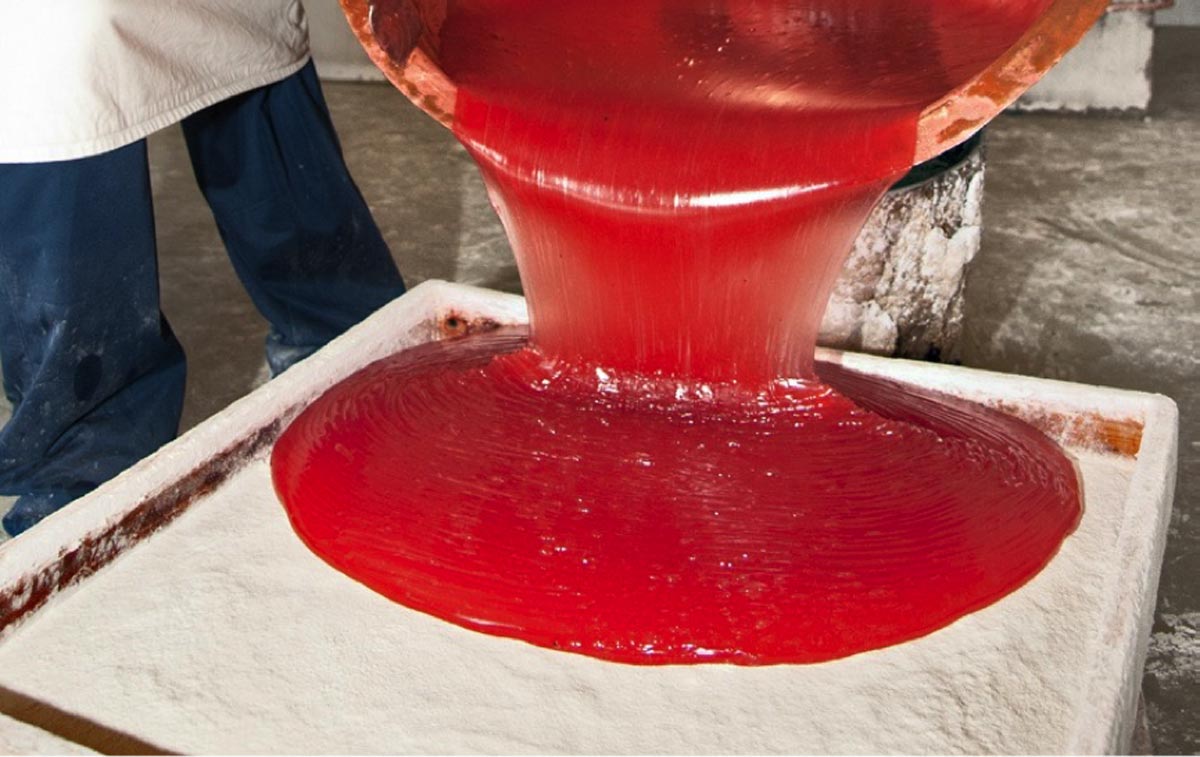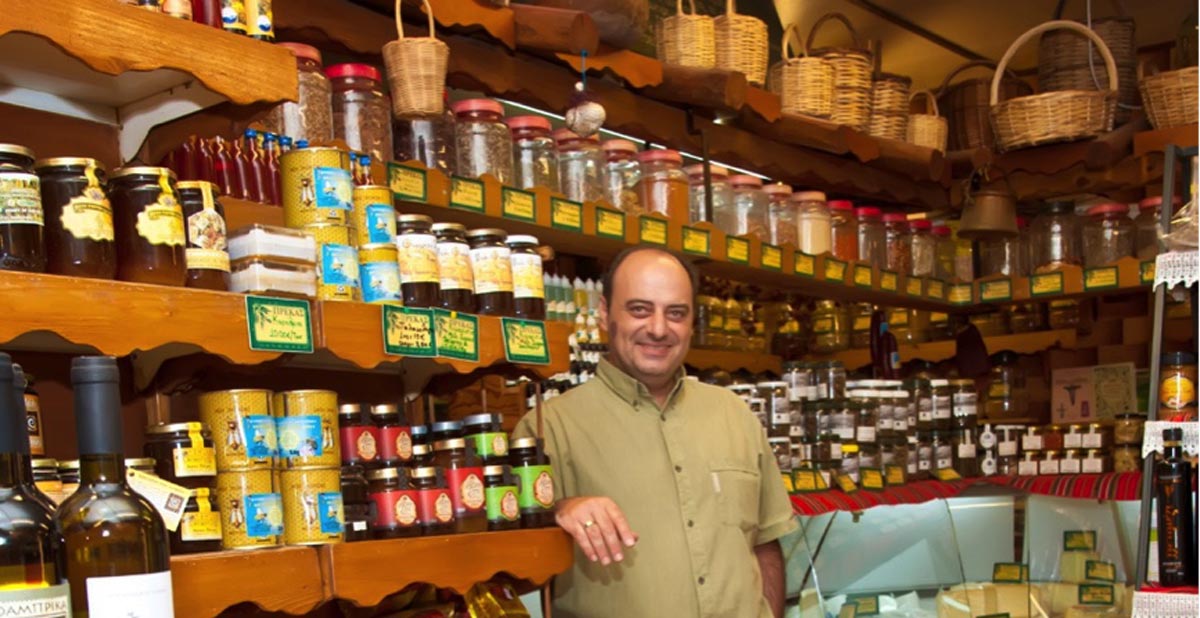A culinary give-and-take, a “double” wedding of flavors from East and West, two twin hills crowned by two religions.
By Nikoleta Makryonitou, Photos: Evelyn Foskolou

A culinary give-and-take between the Catholic and the Greek Orthodox populations, a “double” wedding of flavors from East and West, two twin hills crowned by two religions. Plain food, prepared by the poor in the villages and the countryside’s homesteads, meets the mouthwatering yet humble treats of Ano Syra, the area of heavy-duty manges guys and of rebetes underground musicians, but also a rich, complex gastronomy developed in the mansions, inside the fancy kitchen quarters of the villas inhabited by the affluent, upper middle class. Caper & potato salads on the one hand, stuffed woodcocks on the other.
Syros’ multi-faceted gastronomy was built step by step in the last centuries. Just like a magnet, it drew a motley crowd, diverse cultures and peoples who fell in love with the island and embraced it as their home. As local chef Lina Fournistaki aptly puts it “each people brought along its own cooking pots”. The Venetians, the Ottomans, the French, they all left their mark on the island from the 13th to the early 20th century. The arrival of refugees from Smyrna in the wake of the Asia Minor Catastrophe came to complete this culinary fusion. Lavish western creations were served next to Asia Minor dishes and minimal Aegean treats: cumin-flavored meatballs and meatballs fragrant with oregano, eggplant with sweet tomato sauce and cheese, sun-dried tomatoes fried in batter, Cycladic veggie “meatballs”, braised grapevine tendrils, and tender shoots laced with olive oil and lemon.
Rogue caper bushes, rock samphire, and prickly pear cacti
The island’s inland region is dotted with diminutive vegetable patches. In recent years, some producers have turned to organic farming: there’s Eleni Syrganidou and Kiki Konstantinidou, who own 3,500m2 planted with rock samphire just 100m off the sea; there’s Isidoros Freris, who produces heavenly organic cherry tomatoes; and there’s Cyclades Organics, a group of four who farm and pack their own aromatic herbs, with the emphasis on Syros oregano and the local wild thyme (thymus capitatus).
Caper bushes and prickly pear cacti grow freely all over the island. In spring, Syros is fragrant with the aroma of countless wild fennel plants. Equally widespread are the fig trees yielding the tiny white Maroni fig or the Loumbardiko Royale, “the king of figs” as Markos Vamvakaris hailed it in his autobiography.
Pastelariès and “explosive” jams
Syros people love their figs. They harvest them and spread them on baking sheets or hang them up in bunches to dry. Foodies turn those dried figs into pastelariès: they split the figs lengthwise, sprinkle sesame, walnuts, and cinnamon on the halves, join the two halves together and bake them in the oven. Once the figs have cooled down, they are placed in jars to be offered as a sweet treat or a melt-in-the-mouth accompaniment to shots of tsipouro and/or “San Michalis” cheese. Two of the sensational artisanal jams made by the “Arom” cottage industry proudly feature local figs. One teaspoonful of those jams is like a bite into fresh fruit; that’s how intensely fresh they are. They are crafted in small quantities by Greek-French Christophe Huet and have already found their way into upscale delis in Athens and abroad.

San Michalis and “San ta Maratha”
Almost immediately following the closing of BIO-SYR, Syros’ local cooperative, two small cheese-making plants emerged, crafting their products from local cow’s milk in their state-of-the-art facilities. The first one, “Zozefinos”, set up its facilities at Manna in 2011, followed closely by “Tyrosyra”, which began crafting cheese at Vissas in 2013. Both produce the new generation of the century-old PDO San Michalis cheese, also known as “Syros parmesan”. Their cheese is rather piquant, intense, and has a hint of sweetness. Approximately at the same time that the two cheese-making factories went into business, a winery was also established on Syros. Oenologist and winemaker Nikos Hatzakis produces the only bottled wines of the island: “San ta Maratha”, crafted 100% from the Asyrtiko variety; “Fabrika” white, made from a blend of the Monemvasia and white Koundoura grape varieties; and the monovarietal red “Fabrika” made solely from Mandilaria. “Serfiotiko and Kseromachairouda are indigenous grape varieties, which are also very interesting. I’ve already begun experimenting to see what lies ahead,” Nikos Hatzakis tells us.

Syros loukoumi: the celebrated one
Large copper pots and the fragrance of rose and mastic, fancy colors, pistachios and crunchy almonds are only a small part of the East’s contribution to the island’s gastronomy, since the art of making loukoumi chewy candy and halvadopita nougat wafers came to Syros with the refugees fleeing the destruction of Asia Minor. It was in 1832 that the first batch of loukoumi ingredients were blended in a copper pot and it was in 1837 when the first loukoumi box was stamped with the seal of Syros-born loukoumi maker Stamatelakis. No self-respecting Syros-born hosts would ever dream of neglecting to treat their guests and visitors to a loukoumaki, as Syros locals lovingly call their loukoumi. A telling scene, as vivid as ever, is that of the kalathatzides, the street vendors with their baskets (kalathia) piled high with loukoumi who, like modern-day buccaneers, practically “high-jack” the ferries and ships at Syros’ port, pressing their delicious wares on passengers aboard, within the short spell of time the vessels spend docked. Livadaras, Korres, Denaxas, Sykoutris, and Kokkalis are some of the oldest loukoumi-making concerns on the island. The owners maintain that the ingredient responsible for the success of Syros loukoumi is the island’s brackish water. As to the other Syros specialty, halvadopita, it may derive from Asia Minor’s famous halva, but it was on Syros that it acquired its distinctive form of luscious nougat sandwiched between two crunchy wafers.

“Manavika”: the greengroceries of Hermoupolis
It was in the bosom of the up-and-coming middle class of 19th-century Hermoupolis that a marketplace was born. One of Greece’s oldest marketplaces, the marketplace of Hermoupolis easily competes in abundance of goods with the marketplaces of larger cities. Chios Street, the heart of the growing commercial activities of that time, known today as “manavika“ (greengroceries), still hosts a number of purveyors of fine foods. Besides, its sobriquet is amply justified by the presence of three greengrocer’s shops selling local fruits and vegetables. A little farther down the road, in the two butcher’s shops, we’ll find braids of Syros’ famous, fennel-flavored sausages hanging from hooks. There is also louza pork meat, a rare delicacy with an intensely aromatic character anchored on cinnamon, spices, and cloves. Almost next door, at Number 4, there is Kostas Prekas’ grocery store that has remained exactly the same since 1995; shelves and fridges are prominently stocked with Syros’ entire gastronomic repertoire. One alley down, at Athymaritis’ pastry shop, wedged between the macaroons, the syrupy sweets, and the ice cream, there is rodini, a scrumptious sweet treat made with plump almond paste filled with a rich “French-mannered” buttercream. Chios Street is crossed by the beachfront road where another grocery store, Topon Gefseis, is well-stocked with upscale products from both Syros and the rest of the Cycladic islands. A few alleys farther down, we come upon Danos’ bakery which bakes and sells out-of-this-world, round loaves of incredibly dense sourdough bread. Vamvakouris’ bakery is famous for its traditional sweet cheese pies and Kikilis’ bakery is renowned for its psathouria, small round macaroon-like cookies, kneaded seven times.
Πηγή: Γαστρονόμος
